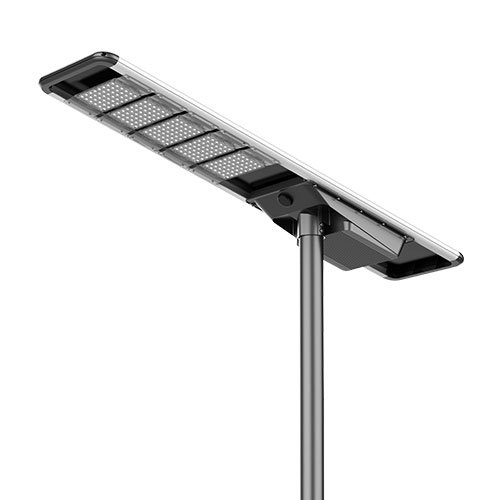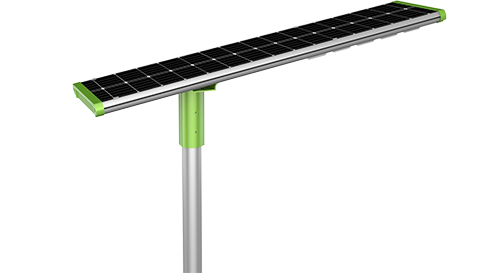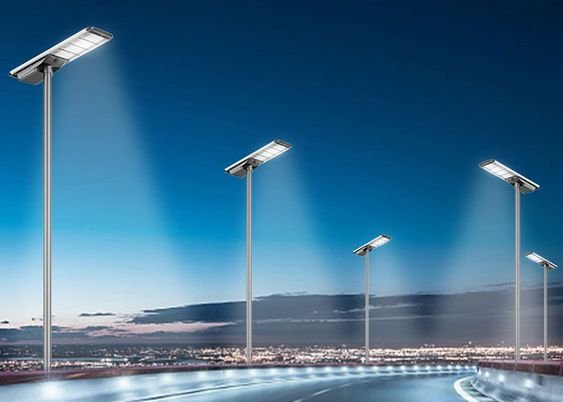Pole height isn’t just a guess—it impacts safety, cost, and compliance. Guess wrong, and you might overpay or put lives at risk.
The right light pole height depends on application, safety needs, spacing rules, and light distribution goals. Get it wrong and you'll waste energy or fall short on visibility.
Choosing the wrong height can lead to shadowy zones, wasted electricity, or fines from non-compliance. Let’s fix this—together.
Why Light Pole Height Matters?
You may think any pole works, but that’s not true. Misjudged height can cause dark spots, unsafe roads, and poor lighting results.
Pole height affects how far light spreads, how safe people feel, and how much energy gets used. Choose height based on purpose, not guesswork.
Visibility and Illumination Coverage
Light pole height should match area width. For example, 10-meter wide roads typically need 10-meter tall poles. This prevents dark patches and ensures even light.Pedestrian and Driver Safety
Short poles in highways can blind drivers or miss the road edges. Too tall in walkways makes faces hard to recognize. Safety depends on choosing the correct scale.Energy Efficiency and Light Pollution Control
Taller poles may cause skyglow or light trespass. LED fixtures allow more focused beams, reducing the need for excessive height and cutting wasted electricity.
Standard Light Pole Heights by Location and Use?
Choosing by location removes guesswork. Different areas have clear standards for pole height.
Each environment—residential, commercial, highway, stadium—has an ideal pole height range. Stick to it for best safety and performance.

Residential Streets: 10–15 ft (3–4.5 m)
Ideal for neighborhood walkways and local roads. Human-scale height helps visibility without harsh glare.
LED vs Traditional Fixtures: LEDs give wider, cleaner spread, often reducing the number of poles needed.Commercial Parking Lots: 20–30 ft (6–9 m)
Lots are wider, with many visual obstructions. Use 2.5–3× height for spacing: a 30 ft pole should be spaced 75–90 ft apart.
Spacing is more important than height alone.Highways and Roadways: 30–50 ft (9–15 m)
Used to light multiple lanes safely. High-mast poles (>80 ft) with cluster lights cover wide zones at long intervals.
Spacing: 100–150 ft for single poles, 300–500 ft for high-mast.Stadiums and Sports Fields: 40–100+ ft (12–30+ m)
Lighting must be strong, uniform, and directed. Use taller poles with narrow beam fixtures.
High aiming angles reduce glare and focus the beam where needed.
How to Choose the Right Light Pole Height?
Pole height isn’t random. You must match it with physical space, beam type, and shadow risks.
Follow four main rules: area size, spacing, fixture output, and obstacles. These together define your ideal pole height.

Area Size and Pole Spacing
Wider areas require taller poles or more poles. Use 2.5–3× the pole height for spacing. For a 25 ft pole, spacing should be around 65–75 ft.Mounting Height vs Fixture Output
Higher lumen lights can cause glare at low heights. Match fixture wattage with proper elevation:- 3,000–6,000 lumens → 10–15 ft
- 6,000–15,000 lumens → 15–25 ft
- 15,000+ lumens → 25–50 ft
Obstacles and Shadows
Trees, billboards, and buildings block light. You need taller poles or smart placement to avoid blocked areas. A simple rule: pole must be higher than nearby obstacles.Fixture Type and Beam Angle
Narrow beam LEDs are better for tall poles. Wide-angle lights suit low mounting. Adjust beam spread before adjusting pole height.
Factors That Influence Light Pole Height Decisions?
Height planning is not just about visibility. It includes local rules, structural strength, and installation methods.
From wind load to foundation type, many physical and regulatory issues influence pole height.
Municipal Regulations and Building Codes
Many cities enforce minimum heights, glare control, or setback distances. Always check local laws—especially for road lighting.Wind Load and Structural Requirements
Tall poles face stronger wind pressure. Use stronger materials and larger bases in high-wind areas:- 60–80 kph: Aluminum poles, 8–10 inch base
- 80–100 kph: Steel poles, 10–14 inch base
- 100+ kph: Galvanized steel, 14+ inch base
Foundation Type and Installation Method
Taller poles need deep concrete anchors or bolt systems. Shallow foundations or direct burial won’t work for heavy or tall poles.Pole Material
Material affects strength, weight, and resistance:- Steel: strong but heavy; prone to corrosion
- Aluminum: lightweight and corrosion-resistant
- Composite: best for windy zones; flexible and light
Common Light Pole Height Mistakes to Avoid?
Even experienced buyers make these errors. They hurt performance and increase maintenance costs.
Never assume one height fits all. Plan based on use, area, and light fixture. Don’t skip wind and soil checks either.

Using Uniform Height Across Zones
Parking lots, highways, and residential streets need different lights. Don’t buy one-size poles for all.Ignoring Wind or Soil Type
Loose or sandy soil needs deeper anchors. Windy zones need stronger materials. Get a basic soil and wind assessment before installing.Skipping Photometric Layouts
These layouts show where light will fall. Skipping this step leads to dark spots or overlap. Ask your supplier for a lighting simulation.
FAQs About Light Pole Heights?
What is the standard height of a light pole?
10–15 ft for residential, 20–30 ft for commercial, 40–50 ft for highways.
How tall are parking lot light poles?
Usually 20–30 ft, depending on lot size and lighting needs.
Do LED lights require shorter poles?
Not always, but they allow for better control, which may reduce height needs.
Can I install a residential light pole myself?
You can if it’s under 15 ft and local codes allow. But always use a qualified installer.
Tools and Resources to Help You Choose Light Pole Height?
Need help making the right call? Use these.
Light pole height charts, online calculators, and expert layout services can guide your choice and ensure code compliance.

Online Lighting Calculators
- lightmart.com
- besenledlight.com
- infralumin.com
Light Pole Height Charts by Application
| Application | Height Range |
|---|---|
| Pedestrian paths | 15–20 ft (4.5–6 m) |
| Residential roads | 20–25 ft (6–8 m) |
| Highways | 40–50 ft (12–15 m) |
- Consulting Photometric Layout Services
Get light spread simulations, fixture suggestions, and spacing plans. It’s worth it.
Conclusion
The right pole height saves energy, improves safety, and ensures compliance. Don’t guess—plan smart.
Use standards, check local codes, and get professional advice before installing. Height isn’t a guess—it’s a spec.







